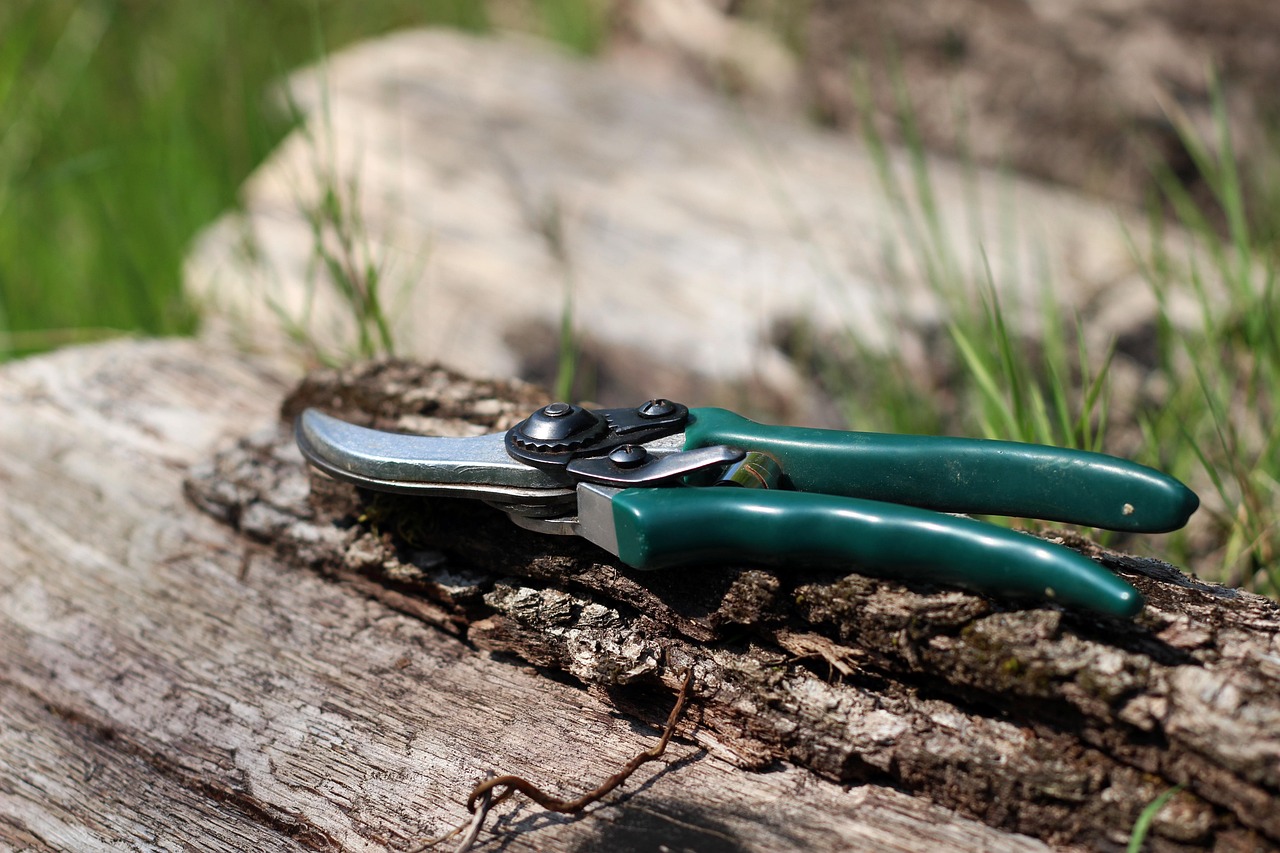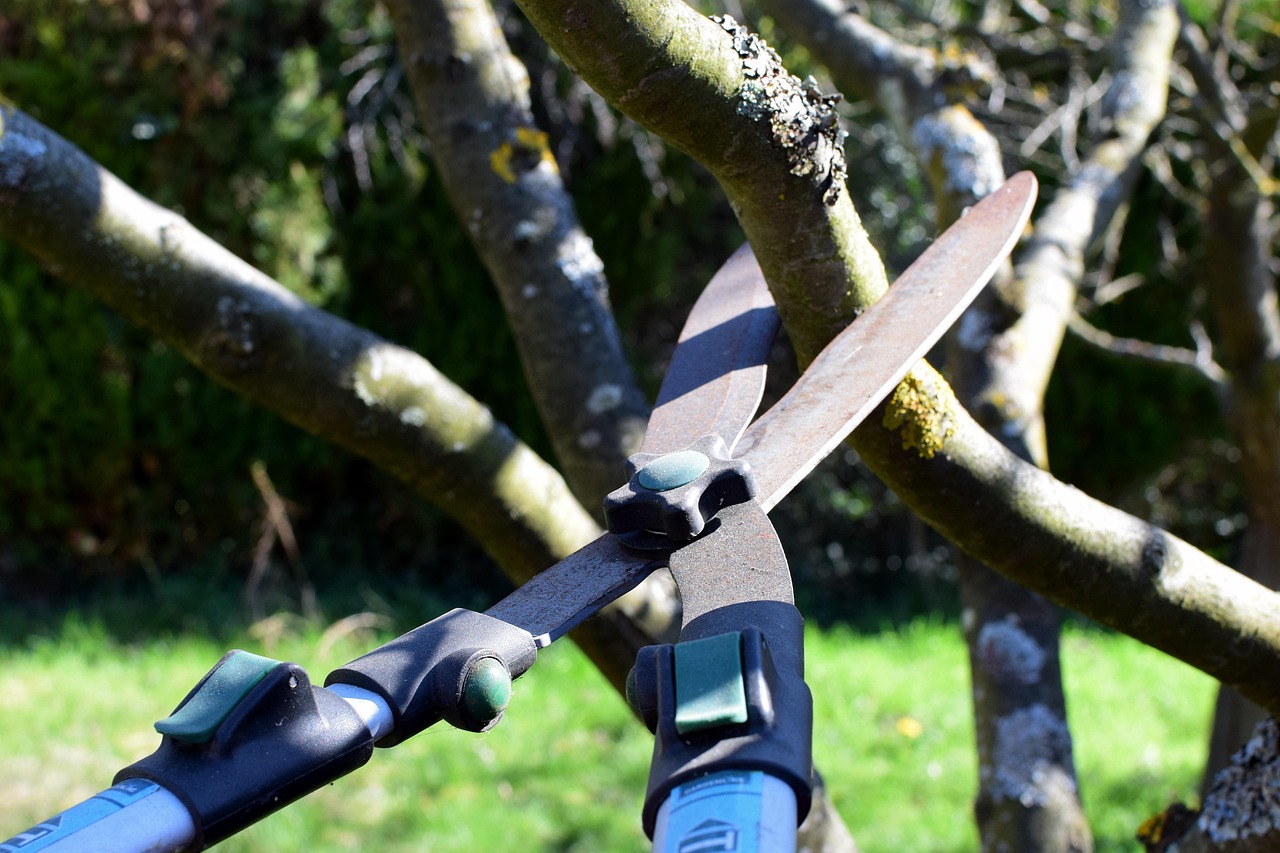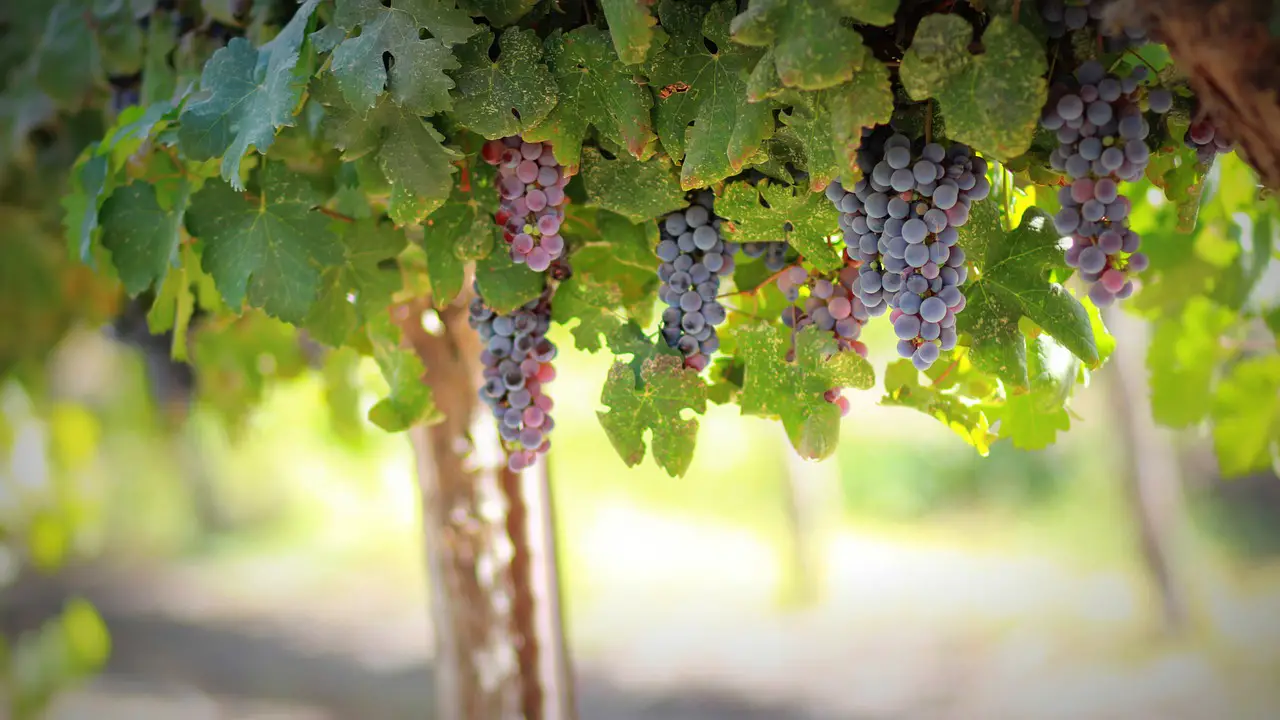To achieve vigorous growth in grapevines, follow these pruning steps: assess the vine’s health, remove dead or damaged wood, cut back last year’s growth to 2-4 buds, and shape the vine to encourage airflow and sunlight exposure.
Grapevine pruning is an essential practice for anyone looking to cultivate healthy and productive vines. Proper pruning not only promotes vigorous growth but also improves fruit quality and enhances the overall shape of the vine. Understanding the right techniques and timing is crucial for successful grapevine management. Each step in the pruning process contributes to the health of the plant and can significantly impact the yield and quality of the grapes produced.

Before diving into specific pruning techniques, it is important to recognize the different types of grapevines and their growth habits. Most commonly, grapevines can be categorized into two main types: table grapes and wine grapes. Each type has unique characteristics that influence how they should be pruned. For instance, wine grapes often require more rigorous pruning than table grapes due to their growth patterns and production goals.
Understanding Grapevine Growth
Grapevines are perennial plants that have a unique growth cycle. They typically undergo a dormancy period in winter, which is the ideal time for pruning. During this time, the vines conserve energy and focus on root development. As spring arrives, new shoots will emerge, requiring careful management to ensure optimal growth.
Pruning serves several key purposes:

- Removes unproductive wood that can harbor pests or diseases.
- Encourages new growth by directing energy to healthy buds.
- Improves airflow and sunlight penetration, which are vital for photosynthesis.
- Shapes the vine for easier harvesting and maintenance.
To successfully prune grapevines, one must become familiar with the anatomy of the plant. Key components include:
| Component | Description |
|---|---|
| Canes | The long stems that grow annually; these will bear fruit. |
| Buds | Small growths on canes that develop into leaves or clusters of grapes. |
| Spurs | Short sections of cane left after pruning; each should have 2-3 buds. |
| Trunk | The thick central stem of the vine that supports all other parts. |
Timing is crucial when it comes to pruning grapevines. It is generally recommended to prune during late winter or early spring, just before new growth begins. This timing helps minimize stress on the plant while maximizing its potential for vigorous growth. Pruning too early or too late can lead to reduced yields or unhealthy plants.
Steps for Pruning Grapevines
The following steps outline an effective method for pruning grapevines:

- Assess the Vine: Before you start pruning, take a moment to assess the overall health of the vine. Look for dead or damaged wood, signs of disease, or pests. Remove any unwanted growth before proceeding.
- Cut Back Last Year’s Growth: Identify the canes that produced fruit last season. Cut these back to 2-4 buds. This encourages new growth while maintaining a manageable vine structure.
- Shape the Vine: As you prune, consider the overall shape of the vine. Aim for an open center to allow sunlight and airflow. This helps prevent disease and supports fruit development.
- Remove Excess Canes: If there are too many canes, selectively remove some to maintain an appropriate number. The goal is to have enough canes to produce fruit without overcrowding.
After completing these steps, it is important to clean up any debris from the pruning process. This helps prevent pests and diseases from taking hold in your vineyard. Regular pruning not only fosters healthy growth but also enhances the aesthetic appeal of your grapevines.
In summary, understanding the basics of grapevine pruning can significantly impact their growth and productivity. By following these steps and maintaining regular care throughout the growing season, your grapevines will thrive and reward you with a bountiful harvest.
Understanding Pruning Techniques
Pruning grapevines effectively requires knowledge of different techniques that can be employed based on the variety of grape and the desired outcome. Each technique serves a specific purpose and can influence the health, yield, and longevity of the vine. Here, we will explore several common pruning techniques that are essential for achieving vigorous growth.

Cane Pruning
Cane pruning is one of the most popular methods used for grapevines, especially for wine production. In this technique, the previous year’s growth is cut back to a few selected canes, which will bear fruit in the coming season. The advantages of cane pruning include:
- Improved Airflow: By reducing the number of canes, airflow around the vine improves, which minimizes the risk of disease.
- Enhanced Sunlight Exposure: Fewer canes allow better sunlight penetration, promoting healthy fruit development.
- Controlled Growth: This method helps maintain a manageable vine size and shape, making it easier to harvest.
The typical process for cane pruning involves selecting 1-3 healthy canes from the previous year, cutting them back to 2-4 buds each, and removing excess growth.
Spur Pruning
Spur pruning is another effective technique, particularly suited for grape varieties that produce fruit on short spurs. This method involves cutting back last year’s growth to short stubs or spurs that have 2-3 buds remaining. Key benefits of spur pruning include:
- Consistency: This method provides consistent fruiting each season since spurs are left on the vine.
- Simplicity: Spur pruning is easier to perform, making it ideal for beginner grape growers.
- Effective for Certain Varieties: Many table grape varieties respond well to spur pruning, leading to higher yields.
Spur pruning is typically executed in late winter when the vines are dormant. This method allows a grower to focus on a defined number of fruiting sites while maintaining healthy wood structure.
Tools and Equipment for Pruning
Having the right tools is essential for effective grapevine pruning. Using proper equipment not only makes the job easier but also ensures clean cuts that promote healing and reduce the risk of disease. Here are some commonly used tools:
- Bypass Pruners: Ideal for making precise cuts on green wood and small branches.
- Loppers: These are suitable for cutting thicker branches that cannot be handled by bypass pruners.
- Saws: A good hand saw or a reciprocating saw may be necessary for major cuts on older vines.
- Gloves: Protect your hands while handling sharp tools and thorny canes.
- Safety Glasses: Protect your eyes from debris while cutting.
Maintaining tools in good condition is crucial. Always sharpen blades before use and clean them after each session to avoid transferring diseases between vines.
Pruning Mistakes to Avoid
Even experienced growers can make mistakes during pruning. Being aware of common pitfalls can help ensure that you achieve the best results. Here are some mistakes to watch for:
- Over-Pruning: Removing too much wood can stress the vine and reduce yields. Always leave enough healthy canes or spurs.
- Improper Timing: Pruning too early or too late can adversely affect flowering and fruit set. Stick to late winter or early spring.
- Lack of Planning: Failing to plan which canes or spurs to keep can lead to an unbalanced vine structure.
- Poor Cuts: Making jagged cuts can damage the plant and invite pests. Use sharp tools for clean cuts.
Avoiding these mistakes requires practice and observation. Take time to evaluate your vines regularly and adjust your approach as needed.
Signs of Healthy Vines Post-Pruning
After pruning, it is important to monitor your grapevines for signs of recovery and healthy growth. Here are some indicators that your vines are thriving:
- New Growth: Look for fresh shoots emerging from your cuts within a few weeks after pruning.
- Budding Leaves: Healthy buds should begin to swell and eventually open into leaves as the weather warms.
- Fruit Set: If flowering occurs successfully, you should see clusters forming later in the season.
Regular observation will help you catch any issues early on. If new growth does not appear as expected, it may indicate problems with pruning technique or vine health. Address these concerns promptly to ensure continued vigor in your grapevines.
Training Techniques for Grapevines
In addition to pruning, training grapevines is crucial for ensuring they grow vigorously and produce high-quality fruit. Training involves guiding the growth of the vine to optimize sunlight exposure and airflow. Different training systems can be applied based on the grape variety, climate, and vineyard layout. Here are some common training techniques.
Cordon Training
Cordon training is a popular method that involves establishing a horizontal framework for the vine. This system works well for both wine and table grapes. Key characteristics of cordon training include:
- Structure: The main trunk is trained to grow horizontally, with canes extending vertically from the cordon.
- Fruit Production: Canes are spaced evenly along the cordon, allowing for balanced fruit production.
- Ease of Management: This method allows for easier pruning and harvesting.
The cordon system can be further divided into two types: simple and double cordon. The simple cordon involves a single horizontal arm, while the double cordon consists of two arms extending from the trunk. Both methods can improve air circulation and light penetration.
Vertical Shoot Positioning (VSP)
Vertical shoot positioning (VSP) is another effective training system. This method encourages upright growth, allowing shoots to grow vertically along a trellis. The benefits of VSP include:
- Maximized Sunlight: Vertical growth allows each shoot to receive optimal sunlight, which enhances photosynthesis.
- Improved Airflow: The upright position helps facilitate airflow, reducing the risk of disease.
- Ease of Harvesting: This method simplifies the harvesting process by keeping grapes accessible.
To implement VSP, a trellis system is set up with vertical wires to support the shoots. As the vines grow, shoots are trained upward and secured to the wires.
Managing Vine Canopy
The vine canopy plays a critical role in grape production. A well-managed canopy allows for proper sunlight exposure and air circulation while preventing overcrowding. Here are some key practices for effective canopy management:
Canopy Thinning
Canopy thinning involves selectively removing excess foliage to improve light penetration and airflow. This technique should be performed during the growing season. Benefits include:
- Enhanced Photosynthesis: By allowing more light to reach the fruit clusters, photosynthetic activity is boosted.
- Reduced Disease Risk: Improved airflow helps prevent fungal diseases that thrive in humid environments.
- Better Fruit Quality: Grapes exposed to sunlight develop better color and flavor.
Leaf Removal
In addition to thinning, specific leaf removal around clusters can expose grapes to sunlight while still retaining enough foliage for photosynthesis. Here are some considerations for effective leaf removal:
- Timing: Leaf removal should occur just before veraison (the onset of ripening) to maximize sunlight exposure without stressing the vine.
- Location: Focus on leaves that shade clusters and avoid removing too many leaves overall to maintain vine health.
- Caution: Be mindful of removing leaves too early or too late, as this can negatively affect fruit development.
Pest and Disease Management
Pests and diseases pose significant threats to grapevines, potentially undermining the benefits of careful pruning and training. Implementing effective management strategies is essential. Here are some common pests and diseases that grape growers should watch for:
| Pest/Disease | Description | Control Measures |
|---|---|---|
| Powdery Mildew | A fungal disease characterized by white, powdery spots on leaves and fruit. | Use fungicidal sprays and ensure good airflow through canopy management. |
| Botrytis Bunch Rot | A fungal infection that affects grape clusters, leading to decay. | Practice good sanitation and avoid excessive moisture around fruit. |
| Aphids | Small insects that feed on plant sap, potentially transmitting diseases. | Introduce beneficial insects or use insecticidal soaps as needed. |
| Spider Mites | Tiny pests that thrive in hot, dry conditions and can cause leaf discoloration. | Misting the vines can help reduce populations; use miticides if necessary. |
A proactive approach to pest and disease management includes regular monitoring of vines and timely interventions. Integrated Pest Management (IPM) strategies can also be beneficial, as they combine biological control with chemical treatments when necessary.
Nutrient Management for Optimal Growth
Nutrient management is another critical aspect of grapevine care. Proper nutrition supports vigorous growth and enhances fruit quality. Essential nutrients include nitrogen, phosphorus, potassium, calcium, and magnesium. Here are some tips for effective nutrient management:
- Soil Testing: Conduct regular soil tests to determine nutrient levels and pH balance before planting or fertilizing.
- Fertilization: Based on soil test results, apply fertilizers as needed, focusing on balanced formulations that meet vine requirements.
- Organic Matter: Incorporate compost or well-rotted manure to improve soil structure and fertility over time.
Nutrient management should align with the growing season, taking into account the vine’s specific needs during different growth stages.
Water Management for Grapevines
In addition to proper nutrient management, effective water management is essential for enabling vigorous growth in grapevines. Grapevines require consistent moisture to thrive, but overwatering can lead to root rot and other issues. Here are some best practices for managing water effectively:
- Drip Irrigation: Implementing a drip irrigation system can provide targeted watering directly to the roots, minimizing water waste and ensuring adequate moisture without over-saturating the soil.
- Monitoring Soil Moisture: Use soil moisture sensors or simply check the soil by hand to determine when your vines need watering. Aim to keep the soil consistently moist but not soggy.
- Watering Schedule: During the growing season, establish a regular watering schedule that adjusts based on rainfall and temperature. Young vines may need more frequent watering compared to established ones.
- Drought Management: In regions with limited water availability, consider using drought-resistant grape varieties that require less water and are better suited to dry conditions.
Proper water management not only supports healthy vine growth but also enhances the quality of the grapes produced, making it a critical component of vineyard management.
Seasonal Care for Grapevines
Throughout the year, grapevines require different care depending on their growth stages. Understanding seasonal care can help ensure that your vines remain healthy and productive. Here’s a breakdown of care tasks for each season:
Spring
As temperatures rise and the risk of frost diminishes, spring is an important time for grapevine care. Tasks to focus on include:
- Final Pruning: Complete any remaining pruning before new growth begins.
- Fertilization: Apply fertilizers based on soil test results to support new growth.
- Pest Monitoring: Begin monitoring for pests and diseases as new growth emerges.
Summer
During summer, grapevines are actively growing and developing fruit. Important tasks include:
- Irrigation: Ensure consistent watering, particularly during dry spells.
- Canopy Management: Conduct canopy thinning and leaf removal as needed for optimal light exposure.
- Pest and Disease Control: Continue monitoring and addressing any pest or disease issues promptly.
Fall
As harvest approaches, focus on preparing the vines for the transition into dormancy:
- Harvesting: Monitor grapes for ripeness and harvest at the right time for optimal flavor and quality.
- Post-Harvest Care: Remove any fallen fruit or debris to prevent disease.
- Soil Preparation: Consider adding organic matter or nutrients to the soil to prepare for winter.
Winter
In winter, grapevines enter dormancy, but care is still necessary:
- Protecting Vines: Mulch around the base of the vines to protect against freezing temperatures.
- Tool Maintenance: Clean and sharpen pruning tools in preparation for the next pruning season.
- Pest Control: Inspect for any overwintering pests and take appropriate measures to control them.
Final Thoughts
Caring for grapevines requires a comprehensive approach that includes pruning, training, nutrient management, water management, and seasonal care. By following best practices in each of these areas, growers can foster healthy vines that produce high-quality fruit year after year. Regular observation and adjustments based on the specific needs of your vineyard will ultimately lead to successful grape production.
The journey of grapevine cultivation is both rewarding and challenging. As you implement these practices, remember that patience and attention to detail are key. Each grapevine responds uniquely to care techniques, so learning from experience will help you refine your methods over time.
Investing time in understanding your vines, their growth patterns, and their specific requirements will pay off with bountiful harvests and healthy plants. With diligence and commitment, your efforts will yield not only a flourishing vineyard but also a deeper appreciation for the art of grape growing.
